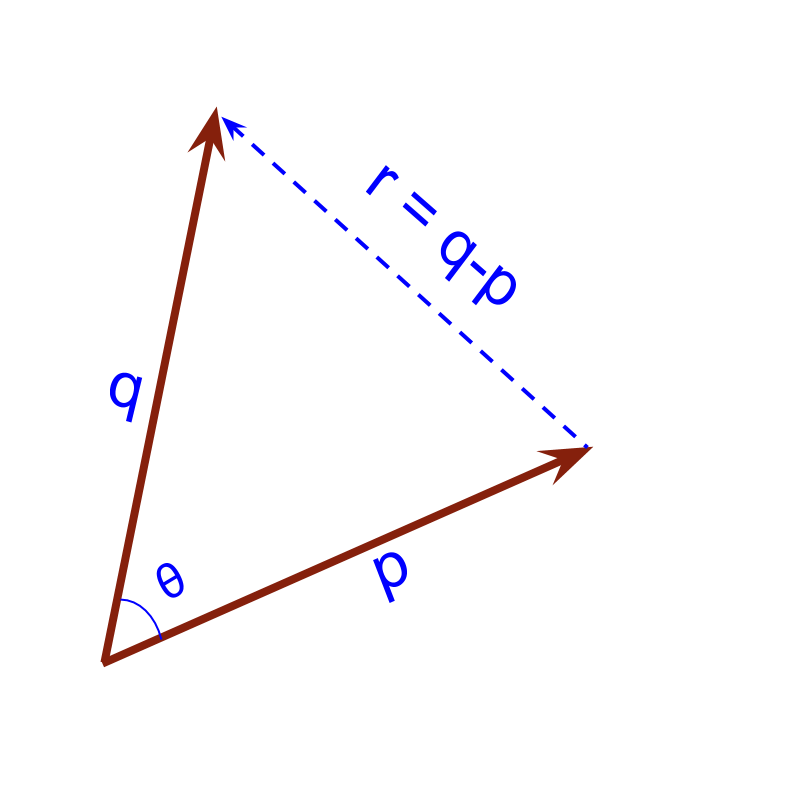
what you'll learn...
Overview
Vector Dot Product : Component Form
» sum of product of individual components
→
simple in component form
Given the two vectors
The vector dot product is defined as
How will one compute the angle from the given component forms of vectors?

Consider this as triangle in coordinate plane. The triangle is made of 3 sides having scalar quantities , and . The cosine rule of triangle is applicable.
,
,
,
With algebraic manipulations on this, we can derive that
Substituting the above in the vector dot product we get.
That derives the component form of vector dot product as
This proof requires one to recall the cosine rule of triangles. A simpler proof, that a student can easily derive, is given below.
easier proof
Bilinear Property : For any vector and
This is explained and proven in properties of the dot product. For now, consider this to be true.
A vector is sum of scalar multiple of vectors. are unit vectors, and the scalar multiples are .
The same applies to Sum of multiple of vectors.
Proof for component form of vector dot product using bilinear property of dot product.
Apply bilinear property of dot product
Apply ,,
, ,
Given and what is ?
The answer is ''
summary
Vector Dot Product in Component Form: For given two vectors and
For given two vectors in component forms, the dot product is the sum of product of corresponding components of the vectors.
Outline
The outline of material to learn vector-algebra is as follows.
Note: Click here for detailed outline of vector-algebra.
• Introduction to Vectors
→ Introducing Vectors
→ Representation of Vectors
• Basic Properties of Vectors
→ Magnitude of Vectors
→ Types of Vectors
→ Properties of Magnitude
• Vectors & Coordinate Geometry
→ Vectors & Coordinate Geometry
→ Position Vector of a point
→ Directional Cosine
• Role of Direction in Vector Arithmetics
→ Vector Arithmetics
→ Understanding Direction of Vectors
• Vector Addition
→ Vector Additin : First Principles
→ Vector Addition : Component Form
→ Triangular Law
→ Parallelogram Law
• Multiplication of Vector by Scalar
→ Scalar Multiplication
→ Standard Unit Vectors
→ Vector as Sum of Vectors
→ Vector Component Form
• Vector Dot Product
→ Introduction to Vector Multiplication
→ Cause-Effect-Relation
→ Dot Product : First Principles
→ Dot Product : Projection Form
→ Dot Product : Component Form
→ Dot Product With Direction
• Vector Cross Product
→ Vector Multiplication : Cross Product
→ Cross Product : First Principles
→ Cross Product : Area of Parallelogram
→ Cross Product : Component Form
→ Cross Product : Direction Removed